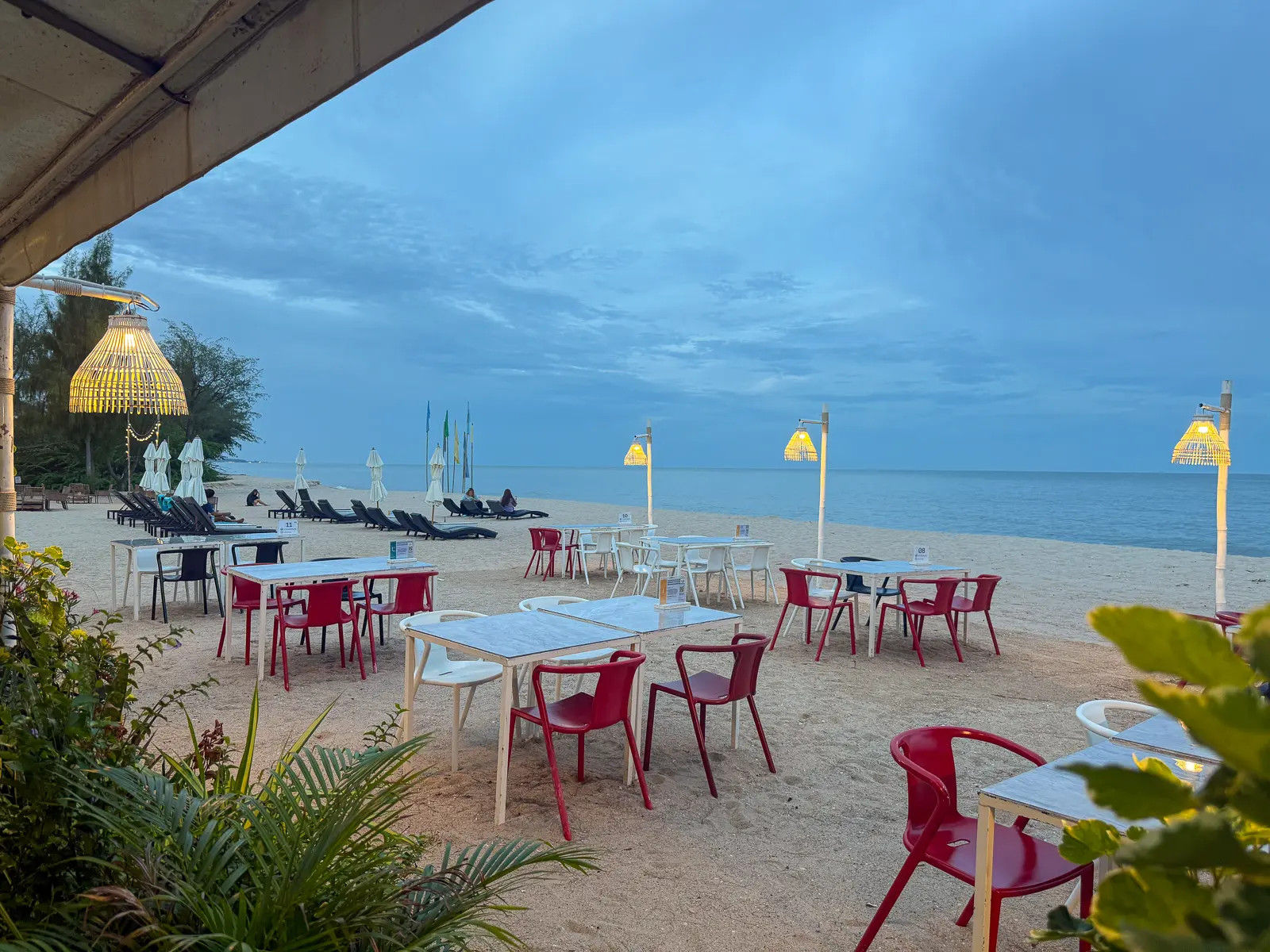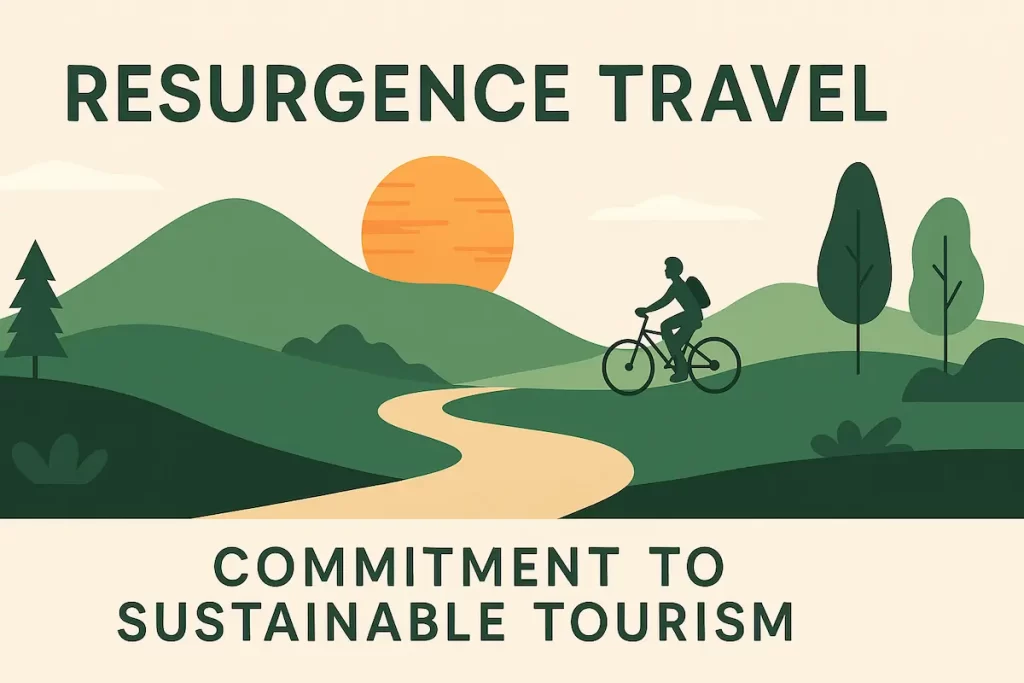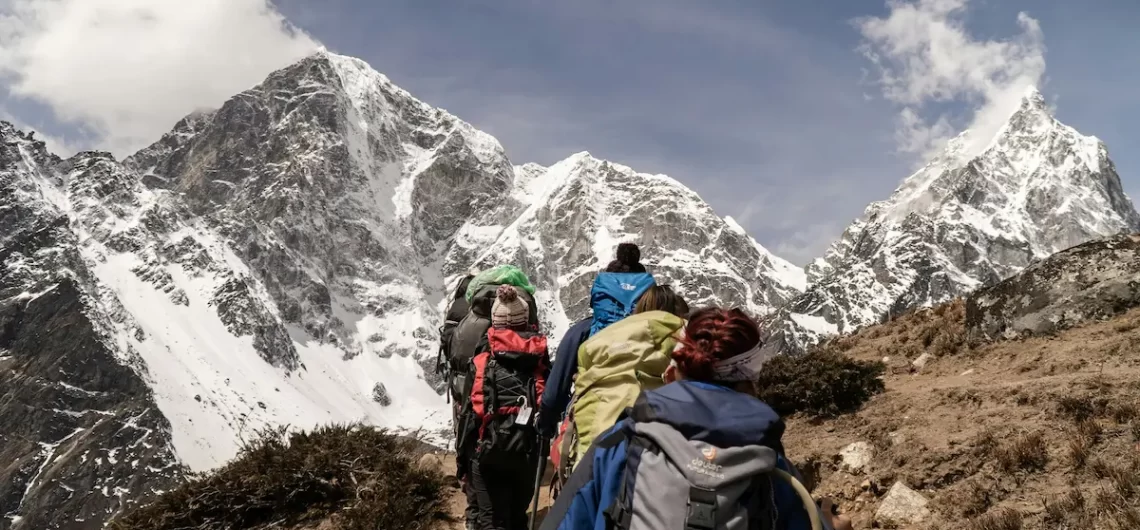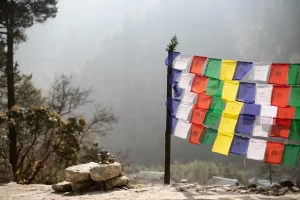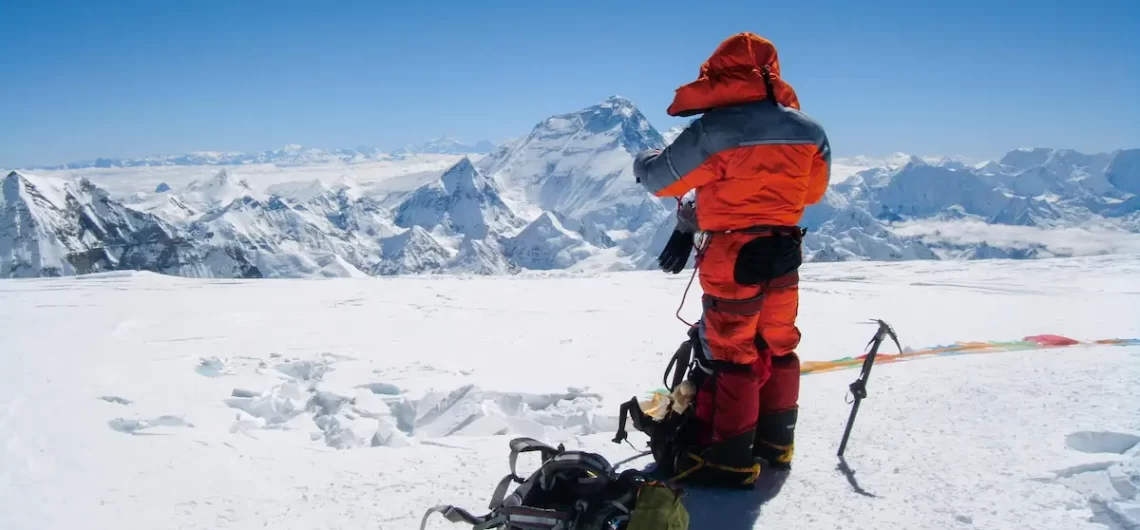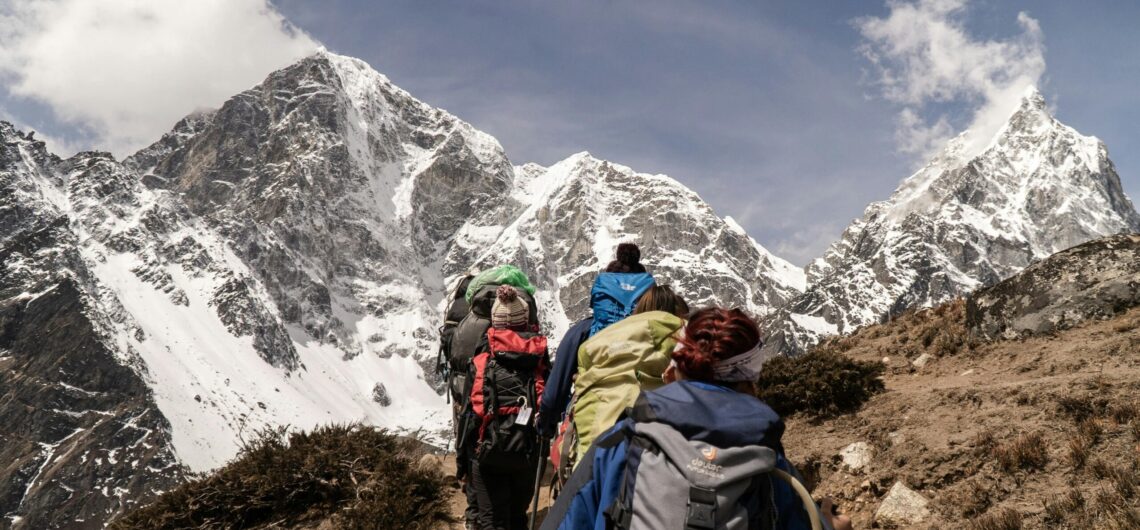Why Nepal Should Be Your First Trek Ever dreamt of standing amidst towering peaks, with prayer flags fluttering in the breeze and the distant sound of yak bells echoing through the valleys? If you’re curious about trekking in Nepal for beginners, you’re in the right place — and trust me, it’s more doable (and more magical) than you might think. When most people hear “Nepal,” they picture Everest and hardcore climbers dangling off icy cliffs. But what they don’t realize is that Nepal is also a warm, welcoming playground for first-time trekkers. You don’t need to be super fit or have years of hiking experience. You just need a decent pair of boots, a sense of adventure, and a little preparation. I remember my first trek here. I was nervous about everything — the altitude, the gear, whether I could keep up. But Nepal has this way of easing your fears. The trails are well-marked, the teahouses are cozy and affordable, and the people? Absolutely incredible. Within a day, I went from anxious newbie to wide-eyed explorer, sipping ginger tea in the shadow of the Himalayas. This guide is written with you in mind — the beginner who’s excited but unsure. I’ll walk you through the best beginner-friendly treks, what to pack, when to go, and how to stay safe and healthy on the trail. I’ll also share what no packing list ever includes: how it feels to walk through those mountain paths for the first time, and why so many of us leave Nepal feeling changed. If you're ready to step outside your comfort zone (without pushing your body beyond its limits), Nepal might just be the perfect place to begin your trekking journey. Let’s lace up your boots and take that first step — one that could lead
Why Nepal Should Be Your First Trek
Ever dreamt of standing amidst towering peaks, with prayer flags fluttering in the breeze and the distant sound of yak bells echoing through the valleys? If you’re curious about trekking in Nepal for beginners, you’re in the right place — and trust me, it’s more doable (and more magical) than you might think.
When most people hear “Nepal,” they picture Everest and hardcore climbers dangling off icy cliffs. But what they don’t realize is that Nepal is also a warm, welcoming playground for first-time trekkers. You don’t need to be super fit or have years of hiking experience. You just need a decent pair of boots, a sense of adventure, and a little preparation.
I remember my first trek here. I was nervous about everything — the altitude, the gear, whether I could keep up. But Nepal has this way of easing your fears. The trails are well-marked, the teahouses are cozy and affordable, and the people? Absolutely incredible. Within a day, I went from anxious newbie to wide-eyed explorer, sipping ginger tea in the shadow of the Himalayas.
This guide is written with you in mind — the beginner who’s excited but unsure. I’ll walk you through the best beginner-friendly treks, what to pack, when to go, and how to stay safe and healthy on the trail. I’ll also share what no packing list ever includes: how it feels to walk through those mountain paths for the first time, and why so many of us leave Nepal feeling changed.
If you’re ready to step outside your comfort zone (without pushing your body beyond its limits), Nepal might just be the perfect place to begin your trekking journey.
Let’s lace up your boots and take that first step — one that could lead to a lifetime of adventure.
Best Beginner Treks in Nepal: Where to Start Your Journey
When it comes to trekking in Nepal for beginners, choosing the right route makes all the difference. You want a trail that’s beautiful but manageable, adventurous but safe, and above all — memorable.
Good news: Nepal has plenty of those.
Below are four of the most recommended beginner treks — each with something a little different to offer, whether you’re chasing epic views, cultural immersion, or just a little peace and solitude.
1. Ghorepani Poon Hill Trek (3,210m)
Duration: 4–5 days
Start/End Point: Nayapul (near Pokhara)
Difficulty: Easy to moderate
If you’re short on time but still want that big Himalayan wow factor, this is your trek. Poon Hill is often described as the perfect introduction to trekking in Nepal — and for good reason.
Each day is filled with forested trails, stone staircases, and sleepy Gurung villages. The real magic, though, comes at sunrise on Day 3. Standing at the summit of Poon Hill, you’ll watch the Annapurna and Dhaulagiri ranges light up in gold and pink. No filter needed.
Teahouses along the trail are plentiful and friendly, with great dal bhat and warm showers (sometimes!). And because it’s lower in altitude, it’s also less likely to trigger altitude sickness, making it a favorite for first-timers.
2. Langtang Valley Trek (3,870m)
Duration: 7–9 days
Start/End Point: Syabrubesi (drive from Kathmandu)
Difficulty: Moderate
Looking for something quieter and a little more off-the-beaten-path? Langtang is a gem — lush, scenic, and rich in Tamang culture.
The trail follows a gentle river valley through pine forests, past glacial streams and into alpine meadows. You’ll spot yaks grazing, prayer wheels turning, and maybe even a red panda if you’re lucky.
Langtang was hit hard by the 2015 earthquake, but it has bounced back beautifully. Villages have been rebuilt, and locals are especially welcoming to trekkers supporting the region’s recovery.
It’s slightly higher than Poon Hill, so you’ll need to pace yourself and stay hydrated — but it’s still absolutely doable for fit beginners with a day or two of acclimatization.
3. Everest View Trek (3,867m)
Duration: 5–7 days
Start/End Point: Lukla
Difficulty: Moderate
Let’s be honest: most people dream of seeing Mount Everest at least once in their life. The full Everest Base Camp trek can take over two weeks and climbs above 5,000 meters — but this shorter Everest View Trek gives you the thrill without the fatigue.
After a dramatic flight into Lukla, you’ll hike through Sherpa villages, cross swaying suspension bridges, and reach the famous Tengboche Monastery, where you’ll get sweeping views of Everest, Ama Dablam, and Lhotse.
This trek is a great way to dip your toe into the Everest region without the risk of pushing too high. Still, because of the elevation, it’s important to go slow and listen to your body.
Bonus: You’ll still get to say you’ve walked part of the trail to Everest Base Camp — and that’s a story worth telling.
4. Mardi Himal Trek (4,500m)
Duration: 5–7 days
Start/End Point: Kande (near Pokhara)
Difficulty: Moderate
If you’re after solitude and stunning mountain vistas, Mardi Himal delivers. It’s less trafficked than the more famous treks, which means you’ll often have the trail (and the views) to yourself.
What makes this route special is how close you get to Machapuchare (Fishtail Mountain) — one of Nepal’s most iconic peaks. You’ll trek through rhododendron forests and ridge lines that look straight out of a fantasy novel.
It climbs a bit higher than the other beginner treks on this list, so it’s best if you’ve done some hiking before or are feeling confident after acclimatizing in Pokhara. But it’s still manageable, and many beginners do it successfully every year.
How to Choose the Right Beginner Trek
| Trek Name |
Duration |
Max Altitude |
Highlights |
Best For |
| Poon Hill |
4–5 days |
3,210m |
Sunrise views, Gurung villages |
First-timers, short trips |
| Langtang Valley |
7–9 days |
3,870m |
Tamang culture, river valley views |
Quieter trails, moderate effort |
| Everest View |
5–7 days |
3,867m |
Everest views, monasteries |
Iconic sights, limited time |
| Mardi Himal |
5–7 days |
4,500m |
Solitude, close mountain views |
Fit beginners, fewer crowds |
Whichever trek you choose, remember: there’s no such thing as the “perfect” trek — only the one that fits your spirit and your pace. And that’s the beauty of trekking in Nepal for beginners — you don’t need to prove anything. You’re already doing something amazing just by showing up.
3. When to Go Trekking in Nepal: The Best Seasons for Beginners
Timing is everything when it comes to planning your first Himalayan adventure. While trekking in Nepal for beginners is possible year-round in certain regions, the experience can vary wildly depending on the season — think clear blue skies vs. monsoon mudslides.
Let’s break it down so you know exactly when to lace up your boots.
Autumn (September to November) – The Gold Standard
If you want picture-perfect views, crisp air, and stable weather, this is the season. Autumn is the most popular time for trekking in Nepal — and for good reason.
The skies are clear, the mountains are in full view, and the temperatures are just right. Teahouses are open and well-stocked, and the trails are buzzing with fellow adventurers. It’s the ideal time to start your trekking journey.
Best for: Iconic views, comfortable hiking, and making friends along the trail.
Spring (March to May) – Wildflowers and Warm Days
Spring is a close second to autumn and another fantastic time for trekking in Nepal for beginners. Temperatures begin to rise, rhododendron forests explode with color, and the days get longer.
Some haze can settle in at lower altitudes, but the landscapes make up for it. It’s also a great time to avoid the largest crowds while still enjoying good trail conditions.
Best for: Floral beauty, warmer mornings, and less busy routes.
Winter (December to February) – Cold but Quiet
Winter can be surprisingly good for beginners — as long as you stick to lower elevations. Popular treks like Poon Hill are still accessible, and you’ll have more solitude on the trail.
The downside? It’s cold. Really cold at night. But for some, that’s part of the adventure.
Best for: Peace and quiet, budget travel, lower-altitude treks.
Monsoon (June to August) – Not Recommended
Unless you love mud, leeches, and low visibility, this isn’t the time to go. Many trails become slippery, and landslides are a real risk. Most beginners skip this season — and for good reason.
Best for: Staying indoors and planning your next trip.
4. What to Pack for Trekking in Nepal (Without Overpacking Like I Did)
Packing for your first trek can feel like prepping for Everest — even if you’re just doing a 5-day loop. But don’t stress. When it comes to trekking in Nepal for beginners, smart packing is all about layers, essentials, and leaving the “just-in-case” items behind.
You don’t need fancy gear or the latest tech. You need stuff that works — and that you can carry comfortably.
Clothing: Layers Are Your Best Friend
Weather in the Himalayas changes fast. One minute you’re sweating under the sun, the next you’re reaching for gloves. Here’s your core clothing checklist:
- Moisture-wicking base layers (top and bottom)
- Warm fleece or insulating jacket
- Down or synthetic puffy jacket (lightweight but warm)
- Waterproof outer layer (jacket and pants)
- Trekking pants and one pair of shorts
- 2–3 quick-dry t-shirts
- Thermal hat/beanie and sun hat
- Buff or neck gaiter
- Lightweight gloves (and thicker ones for higher elevations)
- 3 pairs of moisture-wicking socks
- Quick-dry underwear
Footwear: Treat Your Feet Like Royalty
Good shoes can make or break your trek.
- Trekking boots: Waterproof, broken-in, with ankle support
- Camp shoes or sandals: For evenings at the teahouse
Optional but helpful: blister tape or Compeed pads, just in case.
Gear: Keep It Light, Keep It Useful
There’s no need to bring your life story on your back. Here’s what you’ll actually use:
- Daypack (30–45L) with rain cover
- Sleeping bag (rated to at least -5°C)
- Trekking poles
- Headlamp (with spare batteries)
- Reusable water bottles or hydration bladder
- Water purification tablets or filter
- Lightweight towel and toiletries
- Sunscreen, lip balm, and hand sanitizer
- Basic first aid kit (with altitude meds if needed)
- Passport + permits in a ziplock
Buy vs. Rent: What You Can Pick Up in Nepal
If you’re on a budget, Kathmandu and Pokhara have loads of trekking shops where you can rent or buy affordable gear. Sleeping bags, jackets, poles — all easy to find.
Packing doesn’t have to be a science. When in doubt, less is more. Trekking in Nepal for beginners is about enjoying the trail, not dragging half your wardrobe up it.
5. Staying Safe and Healthy on the Trail
Let’s be real — trekking in the Himalayas isn’t a casual stroll. But with some basic awareness, you can stay safe, healthy, and fully enjoy the experience. One of the great things about trekking in Nepal for beginners is that the support system is already in place: local guides, well-trodden trails, and welcoming teahouses all help make the adventure feel secure.
Still, there are a few things you need to know before you head into the mountains.
Altitude: Know the Signs, Go Slow
Altitude affects everyone differently — and it doesn’t matter how fit you are. Once you get above 2,500 meters, your body needs time to adjust. Go too fast, and you risk acute mountain sickness (AMS).
Watch for these early symptoms:
- Headache
- Nausea or loss of appetite
- Dizziness or fatigue
- Trouble sleeping
The golden rule? Climb high, sleep low, and take your time. Many beginner-friendly treks in Nepal are designed with gentle elevation gain and built-in acclimatization days, so don’t rush it.
Water and Food Safety: Don’t Let a Dodgy Belly Ruin Your Trek
Nothing cuts a trek short faster than a stomach bug. Luckily, it’s easy to avoid if you’re mindful.
Stick to these tips:
- Don’t drink tap water — use water purification tablets or a filter
- Eat hot, freshly cooked meals
- Wash hands or use sanitizer before every meal
- Avoid raw salads, ice cubes, and undercooked food in rural areas
The food in teahouses is generally safe and delicious — dal bhat, veggie noodles, soups, and momos are all staples.
First Aid and Essentials
Pack a small first aid kit with:
- Painkillers (paracetamol or ibuprofen)
- Rehydration salts
- Blister care
- Diarrhea medication
- Any personal medications
- Basic altitude medication (consult your doctor)
Optional but smart: a whistle, bandages, and a small emergency blanket.
Travel Insurance That Covers Trekking
Not all insurance policies cover high-altitude trekking — some cap coverage at 3,000m. Make sure your plan covers emergency evacuation, helicopter rescue (yes, it’s a thing), and hospital care in Nepal.
Staying healthy while trekking in Nepal for beginners is mostly about common sense. Go slow, drink clean water, listen to your body — and trust the mountains, but never underestimate them.
6. Cultural Tips for First-Time Trekkers in Nepal
Trekking in Nepal isn’t just about mountains — it’s also about people. Along the way, you’ll pass through traditional villages, eat in family-run teahouses, and share trails with locals going about their daily lives. For anyone trekking in Nepal for beginners, understanding the basics of local culture can go a long way in building connection and respect.
Namaste Goes a Long Way
Nepalis are incredibly warm and welcoming. A simple “Namaste” (said with palms pressed together in a prayer-like gesture) is the standard greeting — and it’s always appreciated. You’ll be surprised how often it’s returned with a smile.
Dress Modestly, Even on the Trail
Even though you’re sweating up a hill, showing lots of skin isn’t the norm in rural Nepal. Both men and women should aim to dress modestly.
- Avoid short shorts, sports bras, or topless hiking
- Lightweight, long-sleeve shirts and pants are ideal
- In monasteries and temples, remove hats and sunglasses
This small act of respect goes a long way in local communities.
Teahouse Etiquette: Be a Grateful Guest
You’ll likely stay in teahouses — cozy lodges run by locals that offer food and shelter. Here’s how to be a good guest:
- Order your meals where you sleep (it’s part of how they make a living)
- Don’t haggle over prices — it’s usually already fair
- Return your dishes to the counter after eating
- Say thank you — a genuine “dhanyabad” is always welcome
Temples, Monasteries & Prayer Wheels
- Always walk clockwise around Buddhist shrines or stupas
- Don’t touch or climb on religious monuments
- Remove shoes before entering temples
- If you spin prayer wheels, do so from left to right
You don’t have to be religious to be respectful — just observe how others act and follow their lead.
Being culturally aware while trekking in Nepal for beginners isn’t about being perfect. It’s about showing respect, staying curious, and remembering you’re a guest in someone else’s world.
7. Budgeting and Costs for a Trek in Nepal
One of the best things about trekking in Nepal for beginners is how affordable it can be — especially compared to hikes in the Alps or Patagonia. That said, there are a few key costs you should plan for so you don’t get caught off guard halfway up a mountain.
Here’s a breakdown of what to expect.
Permits and Entry Fees
Most treks in Nepal require a few official documents. You’ll need:
- TIMS Card (Trekkers’ Information Management System): Around USD $10–20
- Conservation Area Permits: Like ACAP (Annapurna) or Langtang National Park — usually $20–30
- Some areas (like Everest region) may have a local rural municipality fee of around $20
These can be arranged through your guide or at the Tourism Office in Kathmandu or Pokhara.
Guide and Porter Costs
While many beginner trails are walkable solo, hiring a guide can really enhance your experience — and take the pressure off.
- Licensed guide: $25–30 per day
- Porter (optional): $15–20 per day
It’s common practice to tip your guide and porter at the end of the trek. Around 10% of the total fee is a good rule of thumb.
Teahouse Accommodation and Meals
Teahouses are a budget trekker’s dream — simple rooms, hearty meals, and mountain hospitality.
- Room: $5–10 per night (often cheaper if you eat dinner and breakfast there)
- Meals: $3–7 per meal (dal bhat, noodles, eggs, tea, etc.)
- Snacks or bottled water: More expensive the higher you go — budget $1–3 each
Transportation and Extras
- Buses or jeeps to trailheads: $5–25 depending on distance
- Domestic flights (e.g. to Lukla): $180–200 one way
- Gear rental or purchase in Kathmandu: Sleeping bag or jacket ~$1–2/day to rent
Sample Daily Budget for Beginners
| Item |
Cost (USD) |
| Accommodation |
$5–10 |
| Meals & snacks |
$10–20 |
| Guide/porter (shared) |
$10–15 |
| Permits (avg/day) |
$2–3 |
| Transport (avg) |
$3–5 |
| Daily total |
$30–50 |
Trekking in Nepal for beginners can be done on a modest budget — or upgraded for a little more comfort. Either way, it’s one of the world’s best-value adventures.
8. Personal Reflections from a Beginner
Not every trek ends with a photo at the summit — and that’s okay. The Himalayas have a way of teaching you what you didn’t even know you needed to learn. For many first-time trekkers, the real journey isn’t just on the trail — it’s what happens inside.
Here are two reflections from beginner trekkers who set out with big dreams and returned home with something even bigger: perspective.
“The Helicopter Exit” — A Lesson in Letting Go
I started the Everest Base Camp trek full of excitement. My pack was light, my boots were broken in, and I felt ready for anything. But by Day 2, things began to unravel.
I felt nauseous, couldn’t keep food down, and ended up riding a horse by Day 4. What I didn’t realize then was that I was showing early signs of altitude sickness. Each day I felt weaker. Meals became harder to finish. By the time I reached Lobuche on Day 8, I had lost nearly 5 kilos and could barely move.
The next morning, I made the difficult decision to take a helicopter out.
It wasn’t the ending I’d imagined, but it taught me something more valuable than any view at Base Camp: trekking isn’t always about reaching the summit. It’s about listening to your body, honoring your limits, and respecting the mountains. I may not have stood at Base Camp, but the journey still changed me. And I’ll be back — wiser, stronger, and even more in love with the trail.
“The Cry at Poon Hill” — A Quiet Triumph
Emma was a solo traveler in her 30s who had never hiked more than 10 kilometers in a day. She chose the Poon Hill trek after reading it was great for beginners — and beautiful. “Two birds with one stone,” she thought.
But by Day 2, the endless stone steps tested her more than she expected. Her legs burned, her breath felt short, and she wondered if she’d made a huge mistake. She didn’t talk much at the teahouse that night. Just ate quietly and went to bed early.
On the morning of Day 3, she made the climb to Poon Hill before sunrise. As the sky lit up with gold and the Annapurna range came into view, she cried. Not because of the view — although it was incredible — but because she had done it. She had pushed through the doubt, the sweat, the ache.
“I realized the trek was never about the mountains,” she later wrote in her journal. “It was about proving to myself that I could do hard things.”
For anyone trekking in Nepal for beginners, don’t measure your success by how far you got. Instead, look at how far you’ve come — in confidence, resilience, and respect for your own limits. The Himalayas don’t just challenge you. They teach you.
Final Thoughts & Encouragement
By now, you’ve probably realized that trekking in Nepal for beginners isn’t just possible — it’s one of the most enriching travel experiences you can have.
You don’t need to be a seasoned hiker. You don’t need to reach Everest Base Camp to feel the power of these mountains. What you need is curiosity, respect for the journey, and a little bit of courage. The rest? That’s what Nepal — and our team at Resurgence Travel — is here for.
There will be moments when the steps feel endless, but then you’ll catch a glimpse of snow-capped peaks through the trees. You’ll share stories over dal bhat in a quiet teahouse. You’ll find strength you didn’t know you had — and humility where you least expect it.
This is more than just a trek. It’s a chance to rediscover what you’re capable of — one step at a time.
Start Your Journey with Resurgence Travel
Whether you’re dreaming or already packing, we’d love to help you take the next step.
- Need help choosing the right beginner-friendly trek? We’ll guide you.
- Want a customized packing checklist? We’ve created one just for you.
- Looking for trusted local guides and insider insights? That’s what we do best.
Reach out to our team today and let’s plan a journey that fits you — your pace, your goals, your story.
The mountains are waiting. And so are we.
